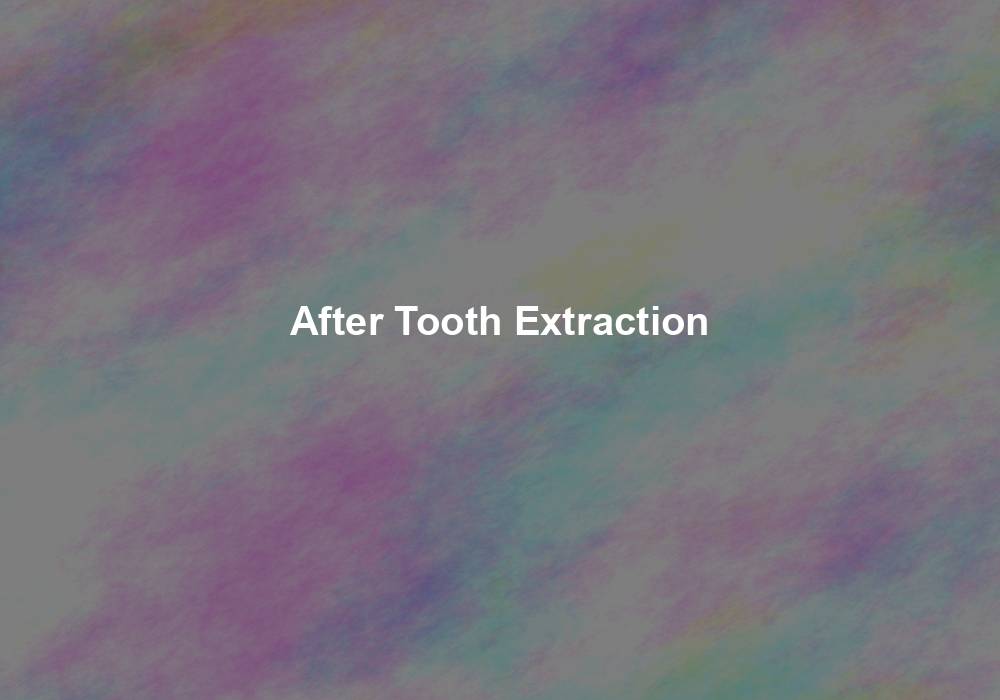Tooth extraction, a common dental procedure, often becomes necessary due to reasons such as decay, injury, or for orthodontic purposes. While the procedure itself is straightforward, the care that follows is crucial for healing and preventing complications. This article delves into the essential steps and precautions to take post-tooth extraction, ensuring a smooth and speedy recovery.
Immediate Post-Extraction Care
Handling Bleeding: Post-extraction, it’s normal to experience some bleeding. To manage this, place a piece of sterile gauze over the extraction site and bite down gently to apply pressure. This action helps in forming a blood clot, which is vital for healing. It’s important to change the gauze as it becomes soaked and to avoid disturbing the clot once it forms.
Read: Necessity of Getting Permanent Crown Put on Dental Implant
Pain Management: Pain following an extraction is a common concern. Over-the-counter painkillers like ibuprofen or acetaminophen are usually sufficient. However, it’s crucial to follow the recommended dosage and consider any personal allergies or interactions with other medications.
Swelling Control: Swelling is a natural response to extraction. To minimize it, apply an ice pack to the cheek near the extraction site in intervals of 10 minutes. This not only reduces swelling but also helps in numbing the area to alleviate pain.
Diet and Nutrition
After extraction, your diet plays a significant role in healing. Stick to soft foods like yogurt, pudding, or soup for the first few days. Chewing can disrupt the blood clot, so avoid hard, crunchy, or sticky foods. It’s also vital to stay hydrated but avoid using a straw, as the suction can dislodge the blood clot. Nutritionally, focus on foods rich in vitamins and minerals to aid the healing process.
Oral Hygiene Post-Extraction
Maintaining oral hygiene post-extraction is critical to prevent infection. However, be gentle around the extraction site. Rinse your mouth with a saltwater solution (1/2 teaspoon of salt in a cup of warm water) after meals and before bed. This practice helps keep the area clean without being abrasive. Resume brushing and flossing your other teeth as usual, but avoid the extraction site for the first few days.
Activity and Rest
Rest is crucial immediately following an extraction. Avoid strenuous activities for at least 24 hours to prevent bleeding and aid healing. When lying down, prop your head with pillows, as lying flat may prolong bleeding. Gentle movement after the first day is fine, but listen to your body and avoid overexertion.
Potential Complications and How to Address Them
Be aware of potential complications like dry socket, where the blood clot fails to form or is dislodged, leading to delayed healing and severe pain. Signs of infection, such as increased pain, swelling, or a foul taste, require immediate attention from a dentist. If you experience severe or prolonged symptoms, it’s imperative to seek professional advice.
Read: Steps to Take if Your Dental Implant or Crown Loosens or Falls Out
Long-Term Care and Considerations
Follow-up appointments are essential to ensure proper healing. If the extracted tooth leaves a gap, discuss options like implants or bridges with your dentist. Long-term, focus on oral hygiene and regular dental check-ups to prevent future extractions.
Conclusion
Recovering from a tooth extraction requires careful attention to immediate care, diet, oral hygiene, and activity levels. By following these guidelines, you can ensure a smooth recovery and avoid complications. Remember, while tooth extraction is common, each individual’s recovery can vary. Always consult with your dentist for personalized advice and follow-up care.
This comprehensive guide aims to provide valuable insights into post-extraction care, making your recovery process as comfortable and efficient as possible. Remember, proper care post-extraction not only ensures a speedy recovery but also lays the foundation for long-term dental health.
FAQs
- How Long Does It Take to Heal from a Tooth Extraction?
- The healing time after a tooth extraction can vary, but generally, the initial healing phase, where the socket begins to close, takes about 1-2 weeks. Complete healing of the gum tissue and bone can take up to several months. Factors like the complexity of the extraction and individual health can influence the healing time.
- Can I Brush My Teeth Normally After a Tooth Extraction?
- After a tooth extraction, you should avoid brushing the extraction site for at least 24 hours to prevent dislodging the blood clot. You can brush and floss your other teeth as usual, but be gentle and avoid the surgical area. After 24 hours, you can resume gentle cleaning around the extraction site.
- What Should I Eat After Having a Tooth Extracted?
- Immediately after a tooth extraction, stick to soft, easy-to-chew foods like yogurt, applesauce, soup, and pudding. Avoid hot, spicy, or crunchy foods, as these can irritate the extraction site. Gradually reintroduce solid foods into your diet as your comfort allows over the next few days.
- How Can I Manage Pain After a Tooth Extraction?
- Pain management after a tooth extraction typically involves over-the-counter pain relievers such as ibuprofen or acetaminophen. Follow the dosage instructions and consult your dentist if you have any specific medication concerns. Applying an ice pack to the cheek near the extraction site can also help reduce pain and swelling.
- What Are the Signs of Infection After a Tooth Extraction?
- Signs of infection after a tooth extraction include persistent or worsening pain, swelling, redness, a bad taste in the mouth, and sometimes fever. If you notice any of these symptoms, particularly if they worsen after a few days, contact your dentist immediately for assessment and potential treatment.
